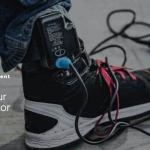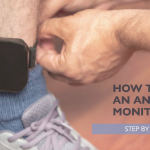When it comes to getting off an ankle monitor early, there are certain strategies you can employ to improve your chances of success. One surprising fact to consider is that participation in rehabilitative programs can often lead to early removal of the ankle monitor. By actively demonstrating a commitment to personal growth and rehabilitation, individuals may be able to convince the appropriate authorities that they are no longer a risk to society and can be trusted to complete their sentence without electronic monitoring.
In addition to participating in rehabilitative programs, it is essential to maintain a clean record while being monitored. This means avoiding any further involvement in criminal activities or violations of the terms of your release. By showing consistent compliance with the rules and regulations set forth by the justice system, individuals can prove their commitment to rehabilitation and responsibility, increasing their chances of having the ankle monitor removed early. The combination of rehabilitative efforts and a clean record can make a compelling case for why an individual should be allowed to complete their sentence without the restriction of electronic monitoring.
Looking to get off your ankle monitor early? While the process may vary depending on your specific situation and jurisdiction, here are some general steps that may help:
- Consult with your attorney to understand the legal requirements and options available.
- Comply with all the conditions of your parole or probation, such as attending required meetings or classes.
- Maintain a clean record by avoiding any new criminal activity.
- Show consistent compliance and good behavior during your designated monitoring period.
- Request a modification or early termination from the court through your attorney, providing valid reasons and evidence.
Remember, each case is unique, so it\’s essential to seek professional legal advice for the best course of action.
Steps to Remove Ankle Monitor Early
If you are wearing an ankle monitor as part of a criminal justice requirement, you may be wondering if there is a way to get it removed early. While the process of removing an ankle monitor may vary depending on your specific circumstances and jurisdiction, there are some general steps you can take to increase your chances of getting off the monitor ahead of schedule.
Keep in mind that the ability to remove an ankle monitor early is not guaranteed and may depend on factors such as the nature of your offense, your behavior while on the monitor, and the discretion of the court or probation officer. However, following these steps can help you navigate the process and potentially obtain early removal.
It is important to note that this article is for informational purposes only and does not constitute legal advice. Consult with a qualified attorney or probation officer for guidance specific to your situation.
1. Comply with all Court Orders and Probation Conditions
The first and most critical step to increase your chances of getting off an ankle monitor early is to strictly follow all court orders and probation conditions. This includes attending all required court hearings, completing any mandated programs or counseling, paying fines or restitution, and complying with any other restrictions or requirements set by the court or your probation officer.
Demonstrating your commitment to rehabilitation and compliance with the legal obligations shows the court that you are taking your responsibilities seriously. This can work in your favor when requesting early removal of the ankle monitor.
2. Maintain Excellent Behavior and Compliance
Aside from meeting the minimum requirements, strive to maintain excellent behavior and full compliance with the terms of your probation. This means avoiding any further legal trouble, abstaining from drugs or alcohol if mandated, and adhering to any curfew or travel restrictions imposed by the court.
Make an effort to demonstrate that you are committed to positive change and rehabilitation. This can be achieved by engaging in community service, volunteering, or securing steady employment to show stability and responsibility. A track record of positive behavior can increase your chances of being considered for early removal of the ankle monitor.
3. Communicate with Your Probation Officer
Build a positive relationship with your probation officer and maintain open communication. Keep your probation officer informed about your progress, any challenges you may be facing, and any positive changes you have made. Regularly attend scheduled appointments and be prepared to discuss your efforts towards rehabilitation.
Your probation officer may have the authority to recommend early removal of the ankle monitor based on your progress and behavior. Maintaining a positive rapport with them can be instrumental in obtaining their support for your request.
4. Petition the Court for Early Removal
If you believe you have demonstrated significant progress and compliance, you may consider petitioning the court for early removal of the ankle monitor. Consult with your attorney before taking this step to ensure you have sufficient grounds and evidence to support your request.
Your attorney can guide you through the process of filing a motion with the court. The motion should outline your reasons for seeking early removal, such as completion of required programs, compliance with probation conditions, and positive behavior during your monitoring period.
Be prepared to present documentation and evidence that support your claims, such as certificates of completion, character references, or employment verification. The court will review your petition and make a decision based on the merits of your case and the recommendations of your probation officer.
Comparing Ankle Monitor Removal Processes
The process of getting off an ankle monitor early can vary depending on your jurisdiction. Here is a comparison of the ankle monitor removal processes in different scenarios:
1. Pretrial Diversion Programs
In some cases, individuals who are involved in pretrial diversion programs may be required to wear an ankle monitor. These programs are designed to divert offenders away from the traditional court system and provide them with an opportunity to address their behavior and avoid a formal conviction.
Depending on the specific program, successful completion of all requirements, such as counseling or community service, may result in the removal of the ankle monitor. It is essential to consult with the program administrator to understand the criteria for early removal.
2. Probation and Parole
Individuals on probation or parole may be required to wear an ankle monitor as part of their supervision. In these cases, the process for getting off the ankle monitor early typically involves demonstrating compliance and progress to the probation or parole officer.
Similar to the steps mentioned earlier, individuals must follow all court orders and probation conditions, maintain excellent behavior, and communicate openly with their probation or parole officer. Petitioning the court may also be necessary in some situations.
3. Post-Conviction Monitoring
For individuals who have been convicted of a crime and are serving their sentence in the community, ankle monitoring may be part of their post-conviction monitoring. The process for early removal would typically involve the steps outlined above: complying with all court orders, demonstrating excellent behavior, maintaining open communication, and petitioning the court if necessary.
Conclusion
While getting off an ankle monitor early is not guaranteed, following these general steps can increase your chances of success. It is essential to consult with legal professionals, such as attorneys and probation officers, who can provide guidance specific to your situation.
Key Takeaways: How to Get Off Ankle Monitor Early
- 1. Comply with all court-mandated requirements.
- 2. Maintain good behavior and demonstrate positive change.
- 3. Request a modification or early termination from the court.
- 4. Provide evidence of meeting rehabilitation goals and completing required programs.
- 5. Seek legal assistance to navigate the process effectively.
Frequently Asked Questions
Here are some common questions about getting off ankle monitor early:
1. Is it possible to get off ankle monitor early?
Yes, it is possible to get off an ankle monitor early in certain circumstances. However, it ultimately depends on the specific conditions and regulations set by the court or probation officer overseeing your case.
If you believe you have valid reasons to request early removal of your ankle monitor, such as completing your sentence requirements, demonstrating good behavior, or presenting a change in circumstances, you can discuss this with your attorney or probation officer. They can guide you on how to proceed and help you present your case to the court.
2. What factors are considered when deciding to remove an ankle monitor early?
When considering a request for early removal of an ankle monitor, several factors are typically taken into account:
– Compliance with all court-ordered requirements and restrictions;
– Demonstration of responsible behavior and adherence to the terms of your probation;
– Completion of any required rehabilitation programs or community service;
– Maintenance of stable employment or enrollment in an educational program;
– Establishing a strong support system and a positive living environment;
– Displaying a low risk of reoffending or posing a threat to public safety.
3. Can I request early removal of an ankle monitor if I have a clean record?
Holding a clean record can be a favorable factor when requesting early removal of an ankle monitor, but it does not guarantee automatic approval. The decision ultimately rests with the court or probation officer overseeing your case.
Having a clean record demonstrates your ability to stay out of trouble, but other factors, such as the severity of your offense, the terms of your probation, and any additional conditions imposed by the court, may also be considered.
4. How long does it usually take to get off ankle monitor early?
The timeline for getting off an ankle monitor early varies depending on several factors:
– The specific conditions set by the court or probation officer;
– The progress you demonstrate in meeting the requirements of your sentence;
– The timeframe needed for the court to review and consider your request.
It is best to consult with your attorney or probation officer to understand the estimated timeline for your specific situation.
5. Are there any alternatives to ankle monitors for supervision?
Yes, there are alternative forms of supervision that may be considered instead of ankle monitors. Some examples include:
– Regular check-ins with a probation officer;
– Random drug testing;
– Restricted travel or curfew;
– Mandatory attendance in counseling or rehabilitation programs.
The specific alternative form of supervision will depend on the circumstances of your case and the judgement of the court or probation officer.
If you want to get off an ankle monitor early, there are a few steps you can take. First, follow all the rules and restrictions given by your probation officer. Be on time for all appointments and meetings.
Next, maintain a good behavior record and avoid any further involvement in criminal activities. Take responsibility for your actions and demonstrate that you are committed to making positive changes.
Additionally, you can request a modification or early release from the ankle monitor program. Provide evidence and support your case with reasons why you no longer pose a risk to society.
Remember, be patient and work closely with your probation officer to understand the process and requirements for early termination of the ankle monitor.




